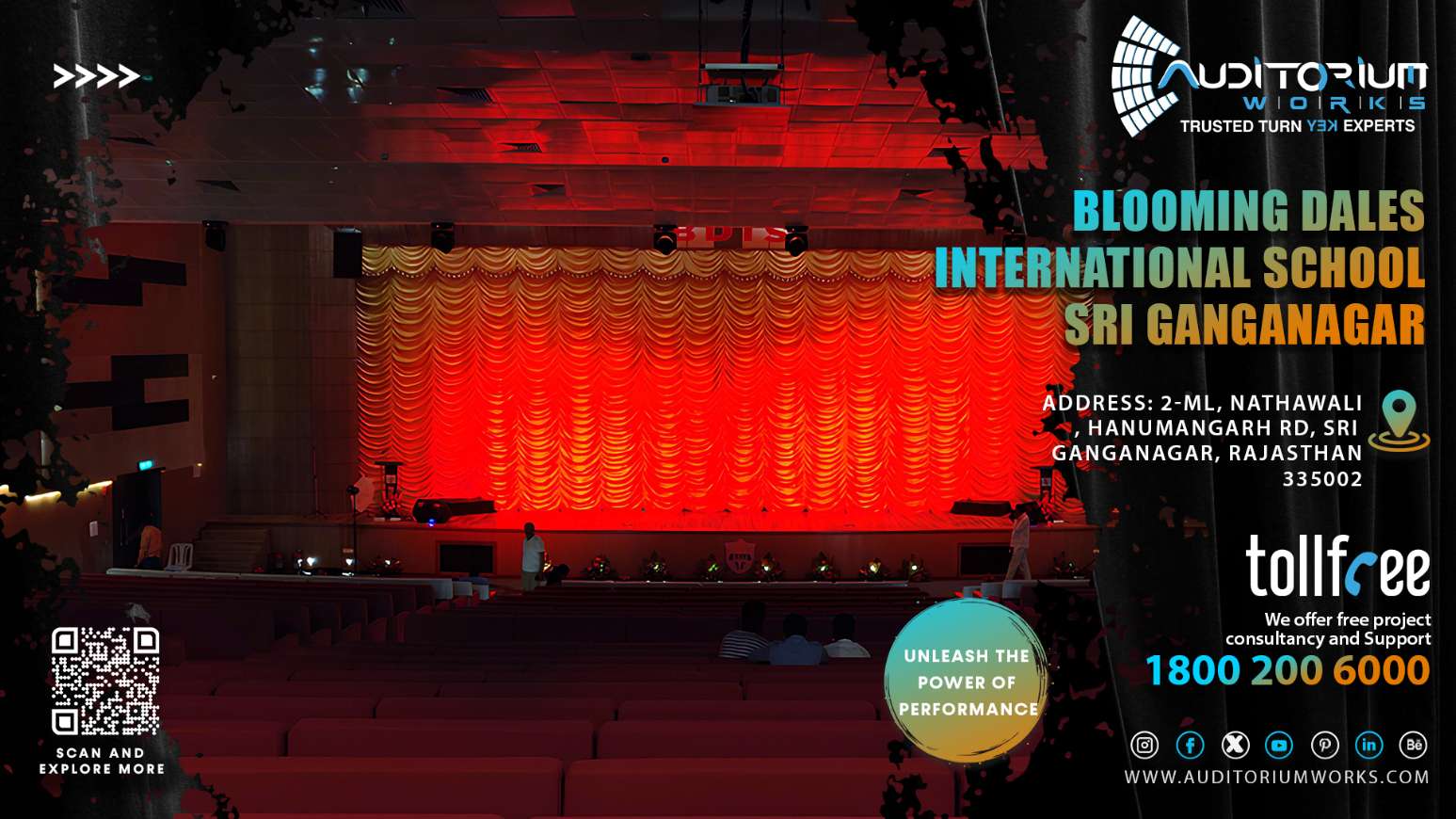Auditorium Acoustics Design Guide: Latest Strategies
Understanding the Core Principles of Auditorium Acoustics
Effective auditorium acoustics hinges on several key principles. Reverberation time, clarity, sound distribution, and background noise level are paramount. Reverberation, the persistence of sound after the source has stopped, influences the perceived spaciousness and fullness. Clarity, the ease with which speech and music can be understood, is crucial for audience engagement. Even sound distribution ensures every listener receives a similar sound experience, regardless of their location. Minimizing background noise from HVAC systems, external traffic, or internal activities allows the intended sound to be heard clearly and distinctly. Failure to properly address these principles results in an unsatisfactory acoustic environment, detracting from the overall experience.
Advanced Acoustic Modeling and Simulation Techniques
Modern acoustic design leverages sophisticated modeling and simulation tools. Software such as CATT-Acoustic, Odeon, and EASE allows acousticians to predict sound behavior within a virtual auditorium environment. These tools utilize geometrical acoustics, wave-based acoustics, and statistical methods to simulate sound propagation, reflection, diffusion, and absorption. By inputting the auditorium’s geometry, material properties, and sound source characteristics, acousticians can visualize sound pressure levels, reverberation times, speech intelligibility metrics, and other crucial parameters. This enables the identification of potential acoustic problems early in the design phase, allowing for cost-effective adjustments before construction begins. Advanced auralization techniques even allow designers and clients to “hear” the predicted acoustics, providing a realistic impression of the final sound experience.
Material Selection for Optimal Acoustic Performance
The choice of materials plays a vital role in shaping the acoustic environment of an auditorium. Different materials exhibit varying degrees of sound absorption, reflection, and diffusion. Absorbent materials, such as acoustic panels, fabrics, and carpets, reduce reverberation by converting sound energy into heat. Reflective materials, such as concrete, glass, and hardwood, bounce sound waves, contributing to sound reinforcement and spaciousness. Diffusive materials, such as curved surfaces and textured panels, scatter sound waves, creating a more uniform sound field. Strategically combining these materials allows acousticians to control the reverberation time, improve clarity, and minimize unwanted echoes and standing waves. Careful consideration should be given to the frequency-dependent absorption characteristics of materials to ensure balanced acoustic performance across the entire audible spectrum.
Innovative Sound Diffusion Techniques for Enhanced Sound Fields
Achieving uniform sound distribution throughout an auditorium is essential for providing a consistent listening experience for all audience members. Sound diffusion plays a crucial role in achieving this goal. Traditional diffusion techniques, such as using irregularly shaped surfaces and strategically placed diffusers, are still effective. However, new and innovative techniques are constantly emerging. Quadratic residue diffusers (QRDs) and maximum length sequence (MLS) diffusers are mathematically designed surfaces that scatter sound waves in a predictable and uniform manner. These diffusers can be customized to specific frequencies and angles of incidence, providing precise control over sound diffusion. Other innovative approaches include using computer-generated diffusers and incorporating diffusion elements into architectural features.
Controlling Low-Frequency Sound and Room Modes
Low-frequency sound poses a significant challenge in auditorium acoustics. Long wavelengths and high energy levels make low-frequency sound difficult to control. Room modes, also known as standing waves, can create peaks and nulls in the sound pressure level at specific frequencies, resulting in uneven bass response and a muddy sound. Addressing these issues requires specialized treatment. Bass traps, which are designed to absorb low-frequency sound, are essential for minimizing room modes and improving bass clarity. Common types of bass traps include Helmholtz resonators, panel absorbers, and porous absorbers. Strategic placement of bass traps in corners and along walls can effectively reduce low-frequency resonances. Optimizing the auditorium’s dimensions and shape can also minimize the formation of problematic room modes.
Integration of Sound Reinforcement Systems for Speech and Music
In many auditoriums, sound reinforcement systems are necessary to amplify speech and music for optimal audibility and clarity. Proper integration of these systems with the room’s acoustics is crucial for achieving a natural and balanced sound. Loudspeaker placement is a critical factor. Loudspeakers should be positioned to provide even coverage throughout the seating area while minimizing reflections and feedback. Line array systems are often used in larger auditoriums to provide precise control over sound dispersion. Digital signal processing (DSP) can be used to optimize the sound reinforcement system for the specific acoustic characteristics of the room. Acoustic modeling can help determine the optimal loudspeaker configuration and DSP settings. The goal is to create a seamless integration between the sound reinforcement system and the room’s acoustics, so the amplified sound sounds natural and engaging.
Acoustic Considerations for Variable Acoustics and Multi-Purpose Spaces
Many modern auditoriums are designed to serve multiple purposes, requiring variable acoustic characteristics. Adjustable acoustic elements, such as retractable banners, rotating panels, and movable reflectors, can be used to modify the reverberation time and other acoustic parameters. These elements allow the auditorium to be optimized for different types of performances, such as speech, music, and film. Control systems can be used to easily switch between different acoustic settings. Careful planning and design are essential to ensure that the variable acoustic elements are effective and easy to use. The integration of variable acoustics requires a thorough understanding of the acoustic requirements for each type of performance and the ability to design flexible and adaptable acoustic solutions.
The Importance of Collaboration Between Architects, Engineers, and Acousticians
Successful auditorium acoustics requires close collaboration between architects, engineers, and acousticians throughout the entire design process. Early involvement of an acoustician is crucial for identifying potential acoustic challenges and incorporating acoustic considerations into the building’s design. The architect’s vision, the engineer’s structural design, and the acoustician’s expertise must be integrated seamlessly to create an auditorium that is both aesthetically pleasing and acoustically sound. Regular communication and coordination between the design team members are essential for ensuring that all acoustic requirements are met. This collaborative approach leads to more effective, innovative, and ultimately, more successful auditorium designs.



